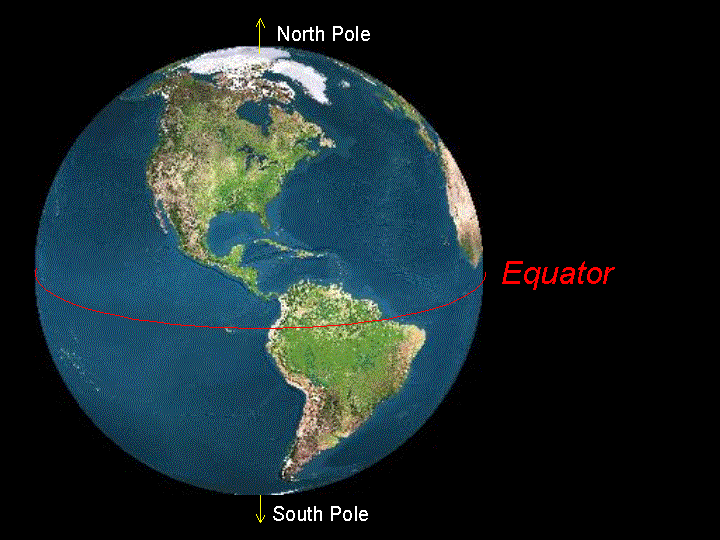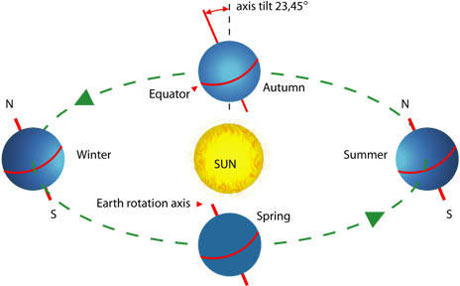Solstices and Equinoxes
Summer Solstice: The longest day of the year (axis always points toward the sun) and first day of the season summer. (June 21/22).
Winter Solstice: Th shortest day of the year (axis points away from the sun) and the first day of the season Winter. (December 21/22).
Autumnal/fall Equinox: Season when there are day and night are equal and first day of the season fall. (September 22/23).
Vernal/Spring Equinox: Season when there are day and night are equal and the first day of Spring. (March 21/22).

Equinox : Equal day (12hours) and equal night (12hours).

Revolution:The movement of the earth around the sun. This takes 365 days or 1 year.

Hemisphere: half of the earth.
Equator: A line that separated Northern and Southern Hemisphere.

Rotation: when Earth spins on its axis.


Axis: Imaginary line that goes through the middle of the earth.

Polaris: North star that earth's axis always pointed to.
Tilt: is on the side of the axis in 23.5 degrees.

There are two solstices and they are summer and winter. Summer Solstice is the first day of the season summer in June 21-22 in the Northern hemisphere and it's the longest day of the year during this time the axis always points toward the sun. Hemisphere is half of the Earth. The winter solstice are the shortest day of the year on December 21-22 also in the Northern hemisphere the axis points away from the sun and it's the first day of winter. Equinox are two times of the year when there are equal day 12 hours and equal night 12hours and there are two equinoxes vernal (spring) equinox is the first day of spring in March 21-22 when the sun crosses the equator moving northward in the southern hemisphere. And the other equinox is autumnal(fall) equinox is the first day of the season of fall on September 22-23. The earth rotate around the sun for 24 hours. Earth orbits around the sun this is called an Ellipse. Its take earth 365 or 1 year to revolving around the sun. We have seasons because of the Earth's tilt which is 23.5 degree it makes the seasons change and the revolution around the sun. The seasons occur as the earth orbits around the sun. The axis is a imaginary line that does through the middle of earth and the Polaris is the star that axis always point at. The is the line that separated the Northern and the Southern hemispheres.
Critical Thinking Question
How is Earth affected by movement(revolution)
Earth is affected by its movement and people moving around the sun, moon and stars. As the earth the moves around it create different movement to cause season, tides and day and night this takes earth 356 days or 1 year to revolve around the sun.
Reflection
Questions:
1.what did you enjoy the most about this project and why?
I enjoyed the most narrating the story board and sharing my ideas with my group because it was fun working with the people in my group and i think that we both enjoyed working together.
2.what was most challenging for you during this project and why?
I think most challenging part for me during this project was when i find out i had to be the narrator because i didn't want to mess up during the filming and the pronunciations of "solstices"it was a litter bit hard but i liked and i have fun.
3.What new skills did you learn from doing this project?
Doing this project i learned a lot about solstices and equinoxes because i never new anything about solstice and equinox and i also learn that you can always try something new and do it well.
4.Is there anything that could have to improve any of your work?Explain.
I think that i could have organize the poster photos in order so that it was easy for the other people to understand more of the hard work we did.
